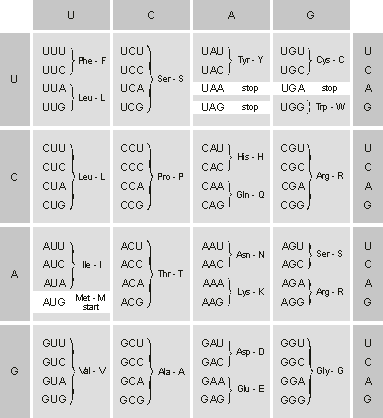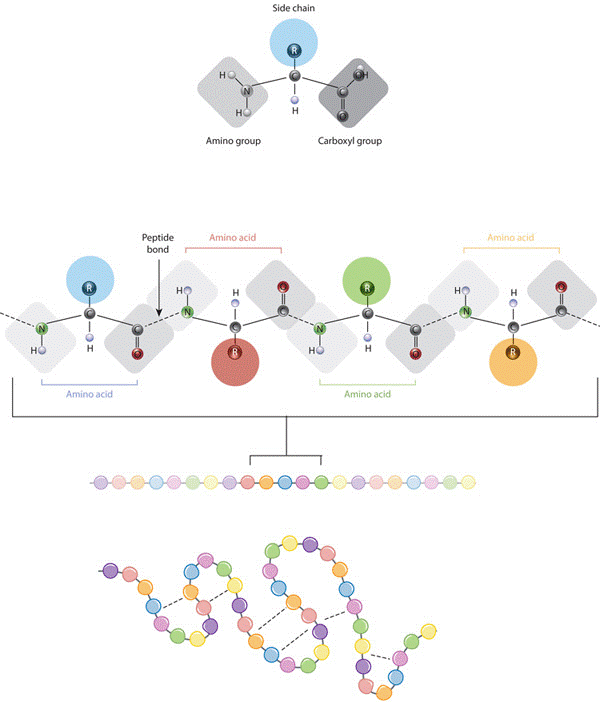Cell Biology Primer
Cell Biology Primer
The human body contains trillions of cells that undergo a cell lifecycle from cell birth, growth, division to create new cells and cell death around the clock. Cell contents as well, whether in the nucleus or the cytoplasm varies in reaction to the environmental signals or as directed by the genetic codes encoded in the DNA that is copied in every cell’s nucleus. From birth, humans inherit their DNA that stretches a sequence of base pairs called adenine (A), cytosine (C), guanine (G), and thymine (T) molecules that could span the distance from the earth to the moon.
This long sequence is formed from 46 chromosomes (23 of each parent). Each chromosome contains a sequence of genes that start with a start codon (3 bases) up to an end codon. Genes are responsible for producing proteins or enzymes through a process of transcription to mRNA, the mRNA translates to proteins. mRNA is the same sequence of base pairs as the gene producing it, except that the thymine (T) is transcribed as uracil (U). Every codon in the mRNA is transcribed as an Amino acid by scanning every three consecutive base pairs as shown in Figure 1.

Figure 1: Reading Codons (Ferreira, 2006)
Amino acids linear sequences form the primary structure of the different proteins they encode. Some amino acids can bond together and hence fold the protein sequence at particular positions to produce the secondary structure, known as alpha helices and beta sheets.

Figure 2: The relationship between amino acid side chains and protein conformation © 2010 Nature Education All rights reserved.
A single protein usually contains a number of these sheets (known as a polypeptide) forming its tertiary structures. The final protein shape contains multiples of these polypeptides forming its quaternary structure. The 3-d shape of a protein is unique and adapts the protein to its function such as interacting with other proteins forming proteins family (Adams, 2014).
Proteins’ functions perform all tasks of cellular life, such as cell shape and inner organization, create other products and cleans cell waste, and any regular cell maintenance. Proteins communicate by signals from outside the cell and mobilize intracellular responses such as metabolism, immune reactions, brain activities, neurotransmitters and many more. Proteins finish their tasks in 30 minutes and up to 2000 hours and then are disposed of, making the cell contents variable all the time. A pathway is a chain of cell activities that starts with a trigger such as stress, injury, eating, drug administration, or cell signals from the environment. The chain of actions can be short or long and can be useful such as metabolising food or harmful such as developing a disease. The cycle continues as triggered by environmental signals received by the human cell to transcribe new mRNA and translate new proteins, divide, grow, and die (Adams, 2014).
During meiosis (cell division to form the half the chromosomes (23) of the human cell in germ cells) and then later in the formation of the zygote by combining the chromosomes again, and even during cell interactions with its environment and received signals, mutations in the sequence of its base pairs happen, such as insertions, deletions and swapping. Some of these mutations do not alter the protein creation process, and some do alter them. Single nucleotide polymorphisms or SNPs are generally associated with the different phenotypes (physical appearances, altered function or disease development) of humans (Barreiro et al., 2008).
References
Adams, J.U., 2014. The Functions of Proteins Are Determined by Their Three-Dimensional Structures, in: O’Connor, C. (Ed.), Essentials of Cell Biology. Nature Education.
Adams, J.U., 2014. Proteins Are Responsible for a Diverse Range of Structural and Catalytic Functions in Cells, in: O’Connor, C. (Ed.), Essentials of Cell Biology. Nature Education.
Barreiro, L.B., Laval, G., Quach, H., Patin, E., Quintana-Murci, L., 2008. Natural selection has driven population differentiation in modern humans. Nat. Genet. 40, 340–345. https://doi.org/10.1038/ng.78
Ferreira, C., 2006. Gene expression programming: mathematical modeling by an artificial intelligence, 2nd rev. and extended ed. ed, Studies in computational intelligence. Springer-Verlag, Berlin ; New York.